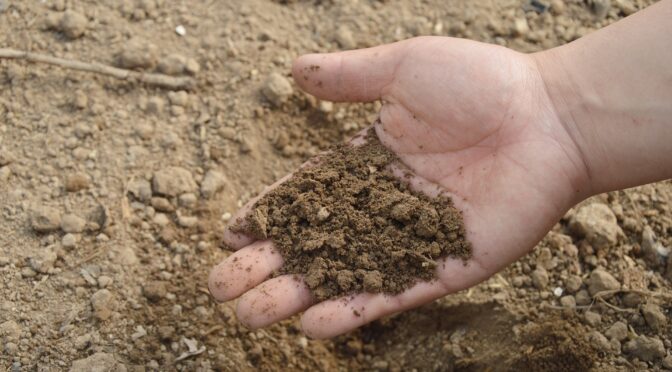Each spring, most gardeners give their soil a bit of attention. We add compost or amendments around planting time, hoping to sustain the seeds and transplants we put in the ground. As the harvests are hopefully rolling in in July and August, we really get to see how our soil is doing. Are our plants yellowing and showing a lack of nutrients? Are our heavy clay soils compacted and problematic for carrots? Is our sandy soil lacking organic matter necessary to hold moisture? Do our tomatoes have blight? These are some of the few things we may start to see. These observations mean it’s a great time to improve our soil health. Here are a few tips to get started with summer soil building:
The Golden Rule for Soil Building: Add Organic Matter
No matter what your soil is like—compacted clay, dry and sandy, or lacking in nutrients—the best thing you can do is add organic matter. Organic matter contains nutrients plants need to survive, helps build soil structure, holds moisture in dry soils, and helps wet soils drain better. There’s nothing it can’t do!
How To Add Organic Matter:
There are several ways to add organic matter to the garden. When gardeners first get started, they often buy a load of finished compost, which can be pricey. Generally, the goal is to add at least one inch of compost to each bed per year to help replenish what we’ve taken. However, there are ways you can add organic matter without buying in compost:
- Sow late summer and fall cover crops like buckwheat, iron and clay peas, winter wheat, and clover.
- Add animal manure from trusted sources (some animal manure may be contaminated with herbicides and other chemicals from the hay and feed they eat).
- Use thick layers of natural mulch that will break down over the season, including straw, old leaves, or woodchips.
- Make your own compost from vegetable scraps, egg shells, coffee grounds, leaves, brown cardboard, etc.
- Try chicken composting or vermicomposting.
- Make biochar and add it to your garden beds or compost.
- Add wood ashes from your campfire pit or woodstove to your garden beds.
Adding organic matter can be challenging, and buying compost can be expensive. Start small! Small, well-maintained gardens rich with organic matter and nutrients will often be as productive as larger, less cared-for plots. 
Other Ways To Build Soil Health This Summer
While organic matter is one of the best ways to care for your soil, it isn’t the only way. Here are a few other steps you can take this time of year to improve your garden for next spring.
Sketch out, photograph, or record your plantings.
Soil-borne diseases and pests are common afflictions in gardens of the Southeast. A great way to mitigate these issues to some extent is to rotate your crops by family on a three-year rotation. This means you avoid planting anything from one plant family, such as the nightshades or Solanaceae, including eggplants, tomatoes, peppers, tobacco, and tomatillos, in the same bed for at least three years.
Summer is a great time to record what your garden layout looked like in 2024. Come spring, it can be a real challenge to remember what exactly was planted where. Take plenty of photos, sketch your layout, or take notes in an app to ensure next season’s garden planning is a breeze!
Get your soil tested.
Late winter and early spring mean an influx of soil samples for many labs and extension agencies. By sending a sample now, you can ensure you get and understand results in plenty of time to start making changes for next year.
Minimize soil disturbance.
Disturbing your soils can contribute to compaction, kill beneficial insects, fungi, and microbes, and cause moisture loss. Avoid tilling when possible, opting for lower-impact equipment like broad forks.
Avoid bare soils.
We never want to leave the garden naked! Make sure your soil is covered whenever possible. Use natural mulches and cover crops like those we mentioned above whenever possible. These not only add organic matter to the soil but also keep soil temperatures cool, reduce erosion, and provide habitat for beneficial insects and microbes.
Eliminate compaction.
Some soils, like clay, are easier to compact than others, but all can suffer from compaction. No matter what soil type you have, you can minimize compaction in a few simple ways. First, use a no-till or reduced tillage system. Second, eliminate traffic in the garden beds whenever possible. Create permanent beds with paths between them that allow you to work the soil without standing in it. Lastly, avoid working in wet soils, especially with tractors and other equipment.
This summer has been a tough one for gardeners and crops! Any weaknesses in our garden’s soil health have become more and more apparent as we face week after week of hot, dry weather. If you notice your soil isn’t as healthy as you would like, now is a great time to take action. Ordering some cover crops, starting a compost pile, or planning a no-till system can help you drastically improve your production in 2025.

